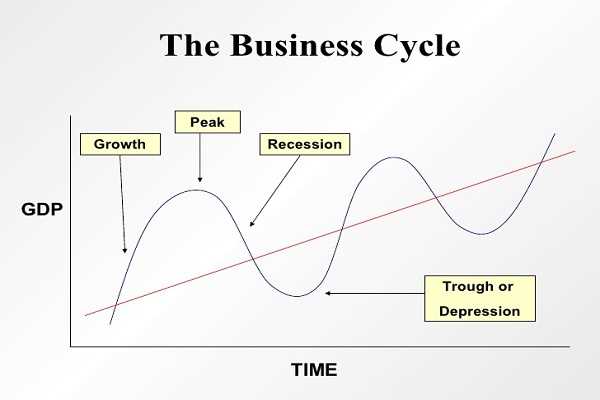What is the Business Cycle?
The business cycle is a recurring pattern of economic expansion and contraction that occurs in every economy. It is characterized by four phases: expansion, peak, contraction, and trough. These phases represent the ups and downs of economic activity and can have significant impacts on businesses, consumers, and policymakers.
1. Expansion
The expansion phase is characterized by increased economic activity, such as rising GDP, employment, and consumer spending. During this phase, businesses experience growth and profitability, and consumer confidence is typically high. Investments and innovations are also common during this phase as businesses seek to capitalize on the favorable economic conditions.
2. Peak
The peak phase represents the highest point of economic activity in the business cycle. It is characterized by maximum employment, high levels of production, and strong consumer spending. However, during this phase, signs of potential economic overheating may start to emerge, such as inflationary pressures and asset price bubbles. These indicators often prompt policymakers to take measures to prevent the economy from overheating and entering into a downturn.
3. Contraction
4. Trough

The trough phase represents the lowest point of the business cycle. It is characterized by minimal economic activity, low levels of production, and high unemployment rates. However, the trough phase also marks the end of the contraction and the beginning of the next expansion. During this phase, policymakers may implement measures to stimulate economic growth and restore confidence in the economy.
Measuring the 4 Phases of the Business Cycle
There are various indicators and metrics that economists use to measure the four phases of the business cycle. These measurements provide valuable insights into the current state of the economy and help policymakers make informed decisions.
During the expansion phase, the economy is growing, and key indicators such as gross domestic product (GDP), employment rates, and consumer spending are on the rise. GDP measures the total value of all goods and services produced within a country during a specific period. It is considered one of the most important indicators of economic growth. Rising employment rates and increased consumer spending indicate a healthy expansion phase.
The peak phase marks the highest point of economic activity in the business cycle. It is characterized by maximum employment rates, high levels of consumer spending, and a booming stock market. During this phase, inflation may start to rise, indicating increased demand and potential overheating of the economy.
After the peak phase, the economy enters the contraction phase. This phase is marked by a decline in economic activity, a decrease in GDP growth, and rising unemployment rates. Consumer spending starts to decline, and businesses may cut back on production and investment. Leading indicators such as stock market declines and a decrease in consumer confidence can signal the onset of a contraction phase.
The trough phase represents the lowest point of the business cycle. It is characterized by high unemployment rates, low consumer spending, and a stagnant or declining GDP. During this phase, the economy is at its weakest, and recovery is needed to move back into the expansion phase. Government intervention through fiscal and monetary policies can help stimulate the economy and promote recovery.
Measuring the four phases of the business cycle provides valuable information about the overall health and performance of an economy. By analyzing key indicators such as GDP, employment rates, consumer spending, and stock market activity, economists and policymakers can make informed decisions to promote economic stability and growth.

Emily Bibb simplifies finance through bestselling books and articles, bridging complex concepts for everyday understanding. Engaging audiences via social media, she shares insights for financial success. Active in seminars and philanthropy, Bibb aims to create a more financially informed society, driven by her passion for empowering others.
